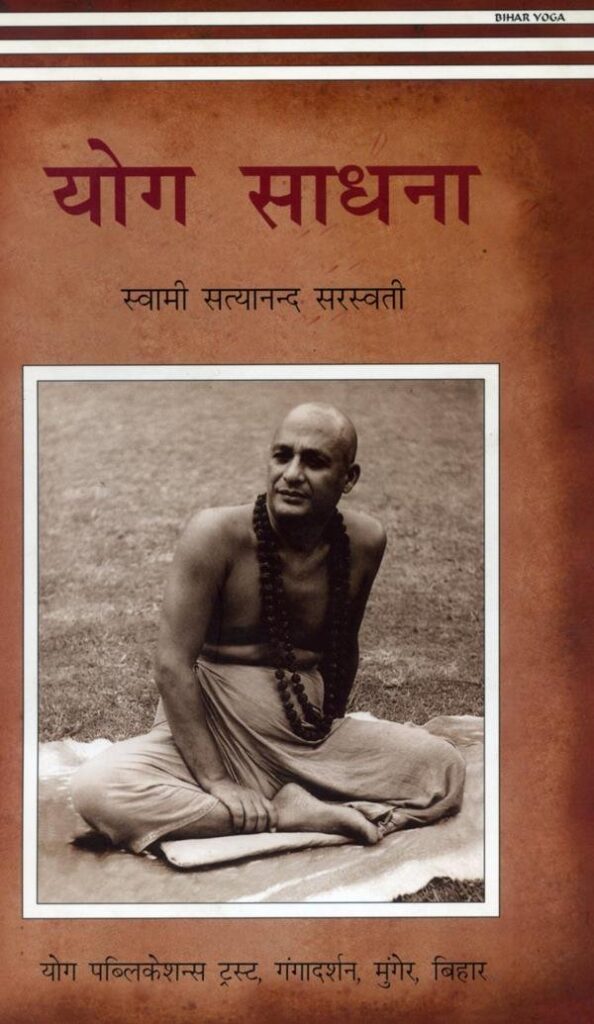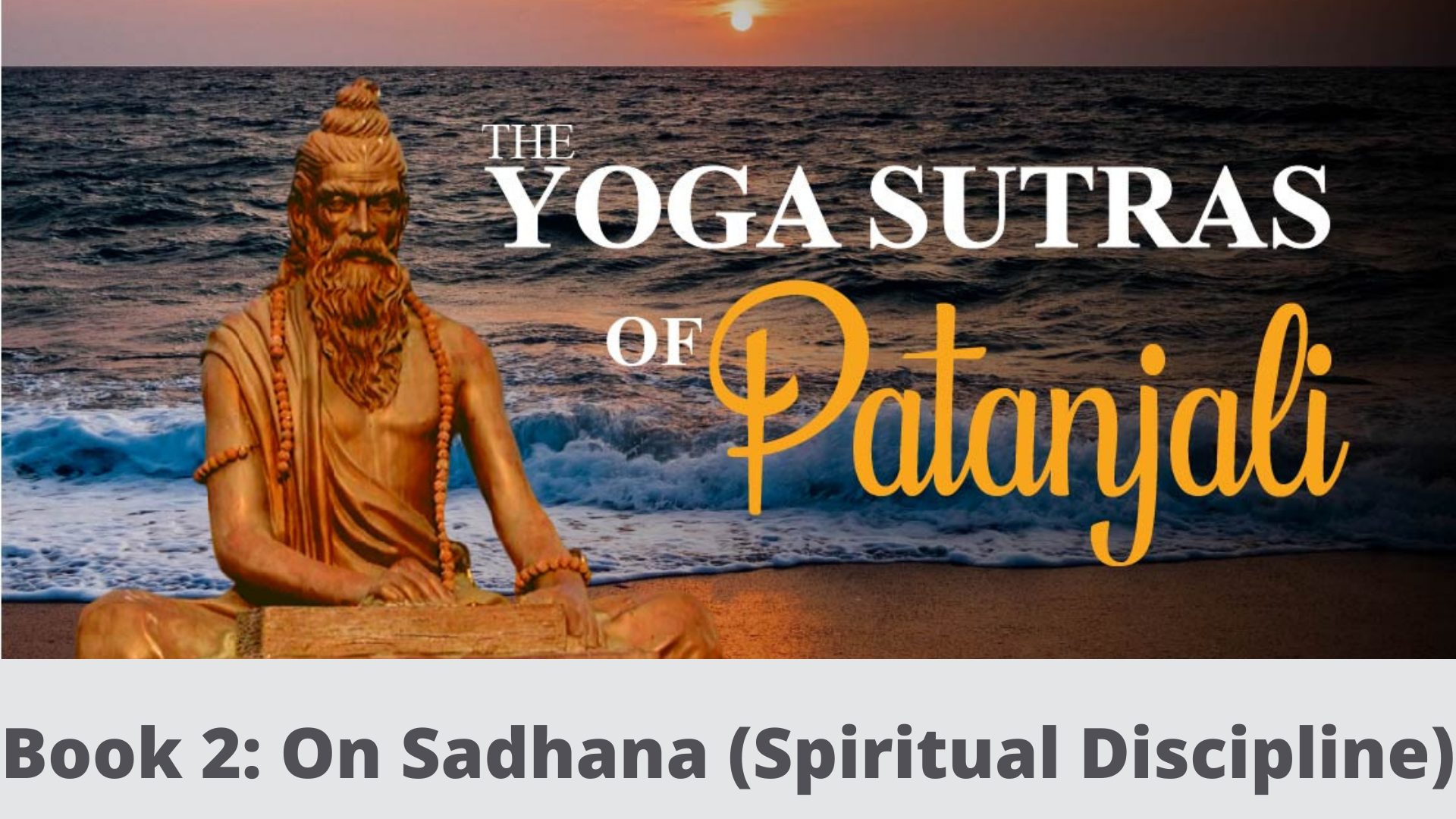Below are the 55 translated verses from the second part of Patanjali’s Yoga Sutra. The second chapter of the Yoga Sutra starting with verse 2.1 deals with the concept of Sadhana and Spiritual Discipline. In 2.1 of Yoga Sutra, Patanjali begins by talking about the importance of discipline in the practice.
Chapter 1 of Yoga Sutra is in this article.
| Verse Number | Translation |
| 2.1 | Austerity, the study of sacred texts, and the dedication of action to God constitute the discipline of Mystic Union. |
| 2.2 | This discipline is practiced for the purpose of acquiring fixity of mind on the Lord, free from all impurities and agitations, or on One’s Own Reality, and for attenuating the afflictions. |
| 2.3 | The five afflictions are ignorance, egoism, attachment, aversion, and the desire to cling to life. |
| 2.4 | Ignorance is the breeding place for all the others whether they are dormant or attenuated, partially overcome or fully operative. |
| 2.5 | Ignorance is taking the non-eternal for the eternal, the impure for the pure, evil for good, and non-self as self. |
| 2.6 | Egoism is the identification of the power that knows with the instruments of knowing. |
| 2.7 | Attachment is that magnetic pattern that clusters in pleasure and pulls one towards such experience. |
| 2.8 | Aversion is the magnetic pattern that clusters in misery and pushes one from such experience. |
| 2.9 | Flowing by its own energy, established even in the wise and in the foolish, is the unending desire for life. |
| 2.10 | These patterns when subtle may be removed by developing their contraries. |
| 2.11 | Their active afflictions are to be destroyed by meditation. |
| 2.12 | The impressions of works have their roots in afflictions and arise as experience in the present and the future births. |
| 2.13 | When the root exists, its fruition is birth, life and experience. |
| 2.14 | They have pleasure or pain as their fruit, according as their cause be virtue or vice. |
| 2.15 | All is misery to the wise because of the pains of change, anxiety, and purificatory acts. |
| 2.16 | The grief which has not yet come may be avoided. |
| 2.17 | The cause of the avoidable is the superimposition of the external world onto the unseen world. |
| 2.18 | The experienced world consists of the elements and the senses in play. It is of the nature of cognition, activity and rest, and is for the purpose of experience and realization. |
| 2.19 | The stages of the attributes effecting the experienced world are the specialized and the unspecialized, the differentiated and the undifferentiated. |
| 2.20 | The indweller is pure consciousness only, which though pure, sees through the mind and is identified by ego as being only the mind. |
| 2.21 | The very existence of the seen is for the sake of the seer. |
| 2.22 | Although Creation is discerned as not real for the one who has achieved the goal, it is yet real in that Creation remains the common experience to others. |
| 2.23 | The association of the seer with Creation is for the distinct recognition of the objective world, as well as for the recognition of the distinct nature of the seer. |
| 2.24 | The cause of the association is ignorance. |
| 2.25 | Liberation of the seer is the result of the disassociation of the seer and the seen, with the disappearance of ignorance. |
| 2.26 | The continuous practice of discrimination is the means of attaining liberation. |
| 2.27 | Steady wisdom manifests in seven stages. |
| 2.28 | On the destruction of impurity by the sustained practice of the limbs of Union, the light of knowledge reveals the faculty of discrimination. |
| 2.29 | The eight limbs of Union are self-restraint in actions, fixed observance, posture, regulation of energy, mind-control in sense engagements, concentration, meditation, and realization. |
| 2.30 | Self-restraint in actions includes abstention from violence, from falsehoods, from stealing, from sexual engagements, and from acceptance of gifts. |
| 2.31 | These five willing abstentions are not limited by rank, place, time or circumstance and constitute the Great Vow. |
| 2.32 | The fixed observances are cleanliness, contentment, austerity, study and persevering devotion to God. |
| 2.33 | When improper thoughts disturb the mind, there should be constant pondering over the opposites. |
| 2.34 | Improper thoughts and emotions such as those of violence- whether done, caused to be done, or even approved of- indeed, any thought originating in desire, anger or delusion, whether mild medium or intense- do all result in endless pain and misery. Overcome such distractions by pondering on the opposites. |
| 2.35 | When one is confirmed in non-violence, hostility ceases in his presence. |
| 2.36 | When one is firmly established in speaking truth, the fruits of action become subservient to him. |
| 2.37 | All jewels approach him who is confirmed in honesty. |
| 2.38 | When one is confirmed in celibacy, spiritual vigor is gained. |
| 2.39 | When one is confirmed in non-possessiveness, the knowledge of the why and how of existence is attained. |
| 2.40 | From purity follows a withdrawal from enchantment over one’s own body as well as a cessation of desire for physical contact with others. |
| 2.41 | As a result of contentment there is purity of mind, one-pointedness, control of the senses, and fitness for the vision of the self. |
| 2.42 | Supreme happiness is gained via contentment. |
| 2.43 | Through sanctification and the removal of impurities, there arise special powers in the body and senses. |
| 2.44 | By study comes communion with the Lord in the Form most admired. |
| 2.45 | Realization is experienced by making the Lord the motive of all actions. |
| 2.46 | The posture should be steady and comfortable. |
| 2.47 | In effortless relaxation, dwell mentally on the Endless with utter attention. |
| 2.48 | From that there is no disturbance from the dualities. |
| 2.49 | When that exists, control of incoming and outgoing energies is next. |
| 2.50 | It may be external, internal, or midway, regulated by time, place, or number, and of brief or long duration. |
| 2.51 | Energy-control which goes beyond the sphere of external and internal is the fourth level- the vital. |
| 2.52 | In this way, that which covers the light is destroyed. |
| 2.53 | Thus the mind becomes fit for concentration. |
| 2.54 | When the mind maintains awareness, yet does not mingle with the senses, nor the senses with sense impressions, then self-awareness blossoms. |
| 2.55 | In this way comes mastery over the senses. |
Yoga Sutra 2.1-2.55

These translations are available in Public Domain.
This marks the end of verses 2.1 to 2.55, chapter 2 of Yoga Sutra.
In the next article, we will deal with chapter 3 of the Yoga Sutra.

2 thoughts on “Yoga Sutra Of Patanjali (2.1 – 2.55) – On Sadhana”